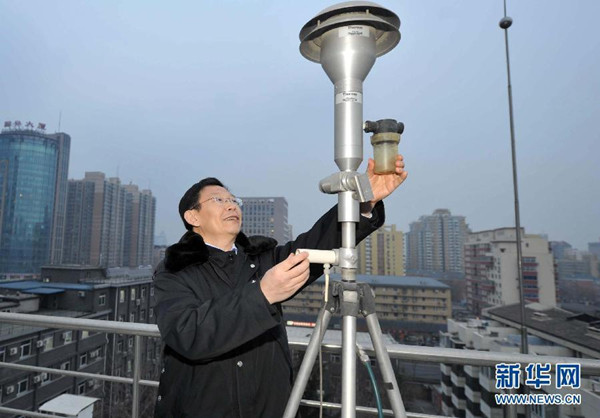Major Chinese plants exceed emissions standards
- By Gong Yingchun
 0 Comment(s)
0 Comment(s) Print
Print E-mail China.org.cn, January 16, 2014
E-mail China.org.cn, January 16, 2014
 |
|
A total of 179 cities were releasing air quality information in real time as of Jan. 2, 2014. [File photo] |
A total of 179 cities were releasing air quality information in real time as of Jan. 2, 2014, the study said. Residents of these cities can use their computers, and even their smart phones, to check all the available air quality information. Real time disclosure has highlighted serious pollution, which has prompted several areas to develop emergency contingency plans for periods of severe pollution.
The Ministry of Environmental Protection issued a new regulation in July last year, requiring all provinces to establish an online platform to disclose real-time online monitoring data from major emitters. Shandong, Zhejiang and Hebei were among the first to start to do so. "The good practice shown in these provinces has helped to give the public the right to know, and helps identify the main pollution sources within that geographical region," Ma said.
Based on present online monitoring data of major emitters, the study concluded that about 4,000 enterprises in the thermal power, steel, cement, refining, petroleum and petrochemical industries contributed about 65 percent of China's industrial emissions.
"The government should strengthen its supervision over these polluting companies. The media should expose incidents of pollution, and environmental organizations and attorneys should litigate polluters, and banks should restrict loans to these companies," said Ma.
The report also pointed out that if enterprises in key regions like Shandong and Hebei were to comply with emissions standards, including the new standards to come in within the next year, their nitrogen oxide discharge volume would be significantly reduced.






Go to Forum >>0 Comment(s)